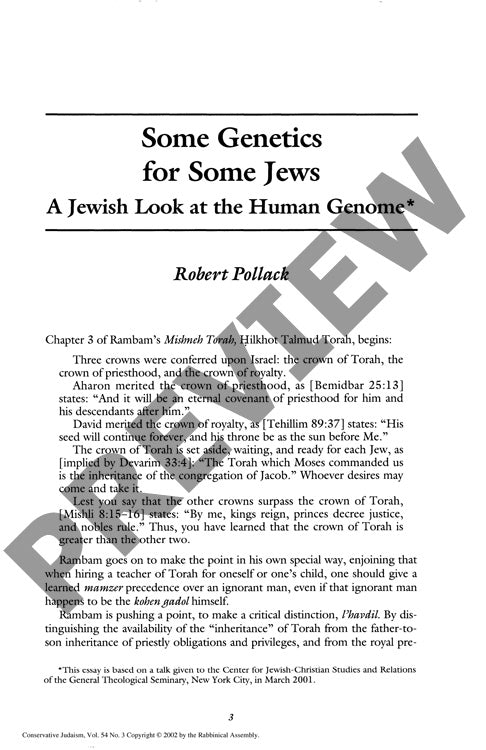Some Genetics for Some Jews a Jewish Loo
Couldn't load pickup availability
Jewish identity remains fundamentally spiritual and cultural rather than genetic, despite the prevalence of certain inherited diseases among Ashkenazic Jews. Through the lens of Rambam's distinction between inherited roles and the non-inherited "crown of Torah," demographic analysis reveals how historical persecution, not inherent biology, shaped the genetic profile of modern Ashkenazic populations. From 1500-1900, the Ashkenazic Jewish population grew dramatically from thousands to over 90% of world Jewry, yet this expansion emerged from roughly 3,000 families who survived 17th-century pogroms. This severe population bottleneck created a founder effect explaining today's higher rates of conditions like Tay-Sachs disease and BRCA1 mutations among Ashkenazic Jews. The methodology combines historical population data analysis with contemporary genomic research on Ashkenazic founder effects, tracking Jewish population patterns from ancient times through the present. While shared ancestry creates common health risks among Ashkenazic Jews, genetic markers neither define nor diagnose Jewish identity. These findings suggest genetic screening technologies should be implemented cautiously to preserve patient autonomy and avoid genetic determinism, ensuring medical practice honors individual complexity rather than pursuing genetic homogenization.

More Information
-
Physical Description
-
Publication Information
Published 2002
ISBN
-
Publication Credits
Robert Pollack

